Role of Product Branding in Building Customer Loyalty and Life Time Value
Info: 11767 words (47 pages) Dissertation
Published: 9th Dec 2019
Case Study: Nestle
CHAPTER 02: LITERATURE REVIEW
2.1 Introduction
This chapter of the research study offers the relevant literature which has been extracted from the books, published journal articles, websites, magazines and newspapers. This chapter discusses the literature from the past researches on the subject of consumer buying behaviour, customer loyalty and branding etc.
2.2 Theoretical background
The theory of marketing and its practice has become greater and greater customer centred, and the managers have a greater emphasis on the client relationship in the longer term as the length of the tenure of customers is assumed to be associated to long run of the organization’s profitability and revenue (Krosnick and Petty, 1995, p. 123; Dick and Basu, 1994, p. 99). The management of customer relationship has organized as per the lifecycle of the customer as the lifetime duration with an organization is not perpetual in general.
The consumers can be dissatisfied and would find a better value at another place (Rowley, 2005, p. 574) or changes the lifecycle in such a way that it causes them to lose the product need. Therefore, the organizations search to influence the consumers across the lifecycle through a passable development and acquisition strategies, for example, delivering products that are customized, cross selling and up selling and making use of retention strategies for enhancing the complete lifetime of customer base. If these efforts have an effective focus on the retention of valid clients, a long life must lead to a greater value of customer lifetime that is related to the lesser costs of operations in subsequent way transactional flows and greater cross buying (Sangeetha and Mahalingam, 2011, p. 83).
2.3 Branding
Branding is the process in which the product or service is named unique logo and image to attract consumers with the help of advertising and consisting theme. The main objective of branding is to establish is a major and different presence in the market that attract and then retain customers (Rowley, 2005, p. 574). Pike (2011) presented similar point of view that branding plays an important role in order to differentiate products from the competitor’s product and to make consumer remember the product. Branding is becoming more than the product or the logo now branding has become a promise of quality and reputation. Product branding is different from marketing as branding is done prior to the marketing. Branding is the preparation for the marketing as branding includes the name, style, design, logo, slogan, visual language, advertising, packaging (official website of cult-branding).
Ross and Harradine (2004, p. 126) conducted large number of researches on how the brand has a greater focus on the consuming goods especially to gain understanding regarding the awareness effects. There is a tendency which takes in to consideration the branding and there is a similar logic of service to have an increased focus on making addition to the procedure of value. For this type of view, brand has a wide role that is related to users and to the company, its employees and the shareholders. Research papers have taken a wider perspective for the branding as the brand of the service (Knox, 1998, p. 729). A major research of the Ross and Harradine (2004, p. 126) initiated from the clarification of experiences that are personal with companies are intensive labour offers an insight in a way that brands have a crucial role.
The model presented by Berry recognises the company’s awareness presents an influence on the equity of the brand, Berry has suggested the meaning of the brand which the consumers derive from the service experience is highly important. Therefore, Berry has stated that the organisation became a primary brand besides the product. The studies which have been conducted have cemented the ground for developing the model of service branding abundantly. All three of this research has highlighted the requirement to possess a broader conceptualization while rethinking the conventional image and a logo view of brands (Krosnick and Petty, 1995, p. 123).
Branding is a crucial concept in trading the academic researches and the activities. It is similar for the similer reason which is a successful brand which helps the owners of the market to obtain a competitive advantage that includes the opportunities for increasing the successful market share, elasticity contrary to the developmental pressures of the competitors and a capability to create the barrier for rival to enter the market. Branding has mitigated the risk of the customers for buying services. In a similar way, a brand of higher level, improves the satisfaction of the customers and the degree of loyalty (Woodruff, 1997, p. 139).
The value of the brand arises from the structure of knowledge which might have their aspects. Thakor (2006, p.27) included the aspects of brand awareness, contribution of brand, perceived quality and the loyalty of the brand. The value of the brand in the markets of trading plays a major role under certain trading exchanges aspects. The researchers have shown that the value of brand is a stronger survival tonic for servicing, consuming and industrial markets (Sirdeshmukh and Singh, 2002, p. 15).
2.4 Customer Loyalty
Customer loyalty is often mixed with the brand loyalty but in fact these are two different concepts. Customer loyalty is when the customer is offered with the lower prices, offers and loyalty cards they will keep company on the other hand brand loyalty is that the customer will never move to any other product of any brand and will be from the same brand . But for brand loyalty the company has to maintain the quality of the product or service the sad side of brand loyal customers is that they make fewer purchases (Srivastava and Tasadduq, 1999, 168). In the views of Kuo and Wu (2009, p. 887) “the main aim of the customer loyalty is to increase and strengthen the relation between the customer and the company by retaining the customer for the long time”. In this tough economic time retaining the customer is very important as there are many options (brands) available for the customer to choose from.
Kotler & Pfoertsch (2007, p. 357) presented the view that the customer loyalty is declining and brands cannot solve it purely through marketing. According to him customer no more trust the brand and brand switching is very common and faster and there is a brand paradox in the world today. Customers leave one brand and purchase from the other as it is happening in the case of Nokia its loyal customers are buying from Apple and Samsung. The reasons for the declining customer loyalty are increasing customer expectation, loyalty program are not good enough, digitization has made all the things clear and open to everyone and the relevance to consumer has become so much weak. Hamidizadeh & Ghamkhari (2009, p. 1) also presented the solution for the declining customer loyalty that it can be regained by not only using the marketing strategies but the companies have to treat consumers, employees and society well.
According to Erdem (2004, p. 191) concept for the loyalty of customers has been given attention at the start of the 1990s when this subject was highly popular with the marketing and the business researchers. The period of 1900s was marked by an increasing degree of rivalry in the international market when the organizations made an attempt to create efficient techniques and methods aiming at the retention of customers. The loyalty of customers can be defined as the behaviour of consumers, building a positive value and experience, which leads to the purchase of products, even if they would not appear to be the most rational decision (Colwell and Jaing, 2009, p. 1489).
According to Peppers and Rogers (2004:57) there are two kinds of concepts of customer loyalty, behaviouristic and neo-behaviouristic. In customer loyalty, behaviouristic approach suggests the implication of viewing and assessing the evidence of the consumer behaviour and the intentions to purchase, while the neo- behaviouristic approach has an increased focus on the causes of the loyalty and the attitudes of the customers for offering the services and goods (Peppers and Rogers, 2004:57)..
According to Bei and shang (2006, pp, 1) the internal factors that represents the demographics and psychographics of the consumers individually. It is revealed that difference in social classes, age groups, people and genders with varied backgrounds of education might differ from the loyalty of customer (Bei and shang, 2006, pp, 1). It can be contrasted by a different researchers group that the external factors such as the tactics for defensive marketing of the competitors and activities of the members of the supply chain can be explored for assessing the effect it has on the structural relationships between the quality of service, relation between the loyalty of customer and the quality (Calonius, 1986, p. 419).
Keller (1993, p. 22) are persuaded that the loyalty of the customers must be viewed as a combination of customer trust and satisfaction. Moreover, the researchers have created a model that is persistent and have customer loyalty in the long run that is determined by variables such as the short term commitment and loyalty. Therefore, the role of trust, commitment and satisfaction has been highly emphasized by (Keller, 1993, p. 22).
2.5 Significance of Customer Loyalty
The loyalty of customer has been described as the repeat the behaviour of purchase, while including an emotional expression of attitudes that are favourable to the provider of service (Srivastava and Tasadduq, 1999, 168). Various researches have an emphasis on the customer loyalty value which is substantial. It is evident from the frequency of visits by the loyal customers that is higher and they make a higher number of purchases in comparison to the customers who are not at all loyal. They move to a specific competitive brand only due to the promotional events and bring in the new customers by positively telling them about the product they have used and the way it is different from all other products. This has a significant impact on the mind of the consumers and therefore, they listen to others for purchasing an item (Sirdeshmukh and Singh, 2002, p. 15).Woodruff (1997, p. 139) offered a discussion on the repetitive purchases of the customers and said that it is more secure in the economic terms, but they possess the channels of information that creates a linkage between relatives, colleagues, friends and potential customers and hence, provides the business with an ability to uphold the haze of the clients. The theories regarding the loyalty marketing has a smaller increase in the loyalty of the customers which significantly increases the business profitability (Sirdeshmukh and Singh, 2002, p. 15).
Kuo and Wu (2009, p. 887) found that there is a five percent increase in the retention of customer which resulted to almost 125 percent increase in the profits of the study in the service sector. Moreover, it is almost 6 highly expensive when compared to the planning that has been done for the marketing strategies for the purpose of attracting the newest of the customers (Kotler &P foertsch, 2007, p. 357). Organizations or companies have understood that they are not required to do all them for retaining the initial percentage of the customers of the pyramid as discovering the profits that are generated to more than fifty percent of the one at the lower level of the pyramid (Keller, 1993, p. 22). The marketing for gratification is necessary and is ideal as a the loyal customer are recognized as an important source for the competitive advantage of companies that possess an increased effect on performance (Hamidizadeh & Ghamkhari, 2009, p. 1).The loyalty has been obtained as a multiple construct of dimension and its progress of research has shown greater development (Doney, 1997, p. 35).
2.6 The Construct of Customer Loyalty
Customer loyalty is accepted completely in the studies of marketing which is concept that is three dimensional: composite, behaviour and attitudes (Keller, 1993, p. 22). The measures of behavioural aspect of loyal is an output that is static for a dynamic process which includes the antecedents, which includes as an actual consumption duration, repeat purchase, proportion, frequency and recommendations for word of mouth (Hamidizadeh & Ghamkhari, 2009, p. 1). The future purchase probability of a brand and the switching behavior brand are examples which have been addressed for assessing the loyalty of behaviour (Srivastava and Tasadduq, 1999, 168). Eventually, the behavioural loyalty includes actual wallet share, the extent of using or buying of service and their purchasing intention future (Erdem, 2004, p. 191). Hence, the academic and real business world both have an emphasis on the importance as it is crucial for the service provider and greater related to the prosperity and revenue (Doney, 1997, p. 35).
An attitudinal approach hypothesizes customer loyalty as a function of a process of psychology and measures loyalty based on the strengths of consumers of affection towards the brand (Dall’Olmo, 2000, p. 137). Trust takes in to consideration an important factor that builds the loyalty of the customer (Bei and shang, 2006, pp, 1).The commitment of emotions and add on is defined as brand liking or organization which enjoys a stay at a certain property and belongingness sense to company. The composite kind of loyalty provides an indication that no the attitudes or behavioural approach of loyalty describes it. Besides, its indication must be simultaneously which must be taken in to consideration the attitudinal and the behavioural perspective (Colwell and Jaing, 2009, p. 1489).Doney (1997, p. 35) future repeated the patronage and the relative attitudes for conceptualizing the loyalty. The relative attitudes are described in to three of the categories; cognitive that is related to the determinants of information towards a brand, affective that related to the feelings towards the brand and a conative which is relative to the behavioural character to the brand. They have argued that the brand loyalty exists when the attitudes of the consumers’ intention and attitude all point to a preference to the brand at the similar point of time.
2.7 Factors Having an Influence on Customer Loyalty
Various studies have attempted to identify the customer loyalty determinants (Hamidizadeh & Ghamkhari, 2009, p. 1). The researches might have a distinctive idea in loyalty conceptualizing, therefore, resulting in varied discussion for verifying antecedents of the loyalty. Nevertheless, it is suggested that the loyalty of the customers might be fostered with outcomes that are distinctive based on the factors, hence, it must be managed and integrated in a strategic manner (Thakor, 2006, p.27).The factors have an influence on the loyalty of customer that has categorized in two bigger sets of the study: one related to the internal factors and the other related to the external factors. The internal factors are discussed as the factors that are associated internally, that has an effect on the organization to directly serve the customers. The organization possesses an ability to offer facilitation with tactics and strategies. In comparison, the external factors are conditions that are external to the organization and are related to the way consumers recognize brands in relation to the competition brand. They sometimes control the limited from the organization (Hamidizadeh & Ghamkhari, 2009, p. 1; Keller, 1993, p. 22).
2.7.1 Internal Factors
These factors incorporate the quality, brand, promotion, and cost. The brand has genuine value for demanding the customers of today; hence, it creates greater experience which helps enabling the loyalty of brand. The promotion as well as the tactics of marketing is all utilized for creating an incorrect brand by enhancing experiences of customers and building a relation to manage the competitiveness in the industry in an efficient manner.
The satisfaction is at a state of end or the process of appraisal from the exposure to experience of service (Doney, 1997, p. 35). Quality is defined as the evaluation of the service facility that is operated by the benefactor of it (Colwell and Jaing, 2009, p. 1489). Overall it can be said that it is apparent to perceive the quality of service, increased intention of the customers to patronize the providers of service (Bei and shang, 2006, pp, 1). The cost has been divided in to transaction and economic costs. The economic costs are the costs which the customers usually sacrifice for acquiring the service or product (Brodie and Whittome, 2009, pp. 345). The transaction costs are a non-monetary cost which prevails in the processes of exchange as a significance of a communication between numerous factors. The imperceptible characteristics of the facility increase the trouble and provide a rise to the variations in the costs of transaction (Sangeetha and Mahalingam, 2011, p. 103).
In a consequent manner, the difficulty of transaction has a undesirable result on the loyalty of the client. The provider of the service increases the understanding of the preferences and tastes of the customers’ hurries up the procedure of transaction and moreover, upsurges the loyalty and satisfaction of the customer through the customization (Brown, 1997, p. 68).
2.7.2 External Factors
These factors include the costs of switching, the factors associated to situation, perceive value, commitments, trust and commitment. The prices of switching are involved in a service provider to the other (Colwell and Jaing, 2009, p. 1489). The costs of switching are the costs which are expected to encounter in future, while the transaction as well as the economic expenses are those occurred during the present time (Bei and shang, 2006, pp, 1). The costs of switching which includes the behavioural, monetary, learning and search related, therefore, can be emotional and economic (Doney, 1997, p. 35). As soon as a customer becomes a part of the relationship of business, they are most probably loyal interactively but price of switching the business partners becomes greater.
The clienteles have frequently develop a part of facility providers afterward taking in to consideration the info exploration fee, apparent risk and the providers that are suitable offers of facility (Hamidizadeh & Ghamkhari, 2009, p. 1).The literature of marketing proposes that the clients purchases depending on the features of situation (Kotler & Pfoertsch, 2007, p. 357). The factors of situation shall be unspoken as a perceived or actual chance is attractively a consistent and behaviour of attitude, for example, in case of stock outs of the brands that are preferred, the incentives for switching the brand with lesser prices of competing the products and an operative in promotion of the store would upsurge to compete a product over the single one that is favoured normally by customer, that is by having an impact on suggested set in the environment choice (Keller, 1993, p. 22).
The perceived value has been defined as an opinion for the customers for the value of the product. It is also related to the faithfulness which ever indirectly or directly as it is very vital for the numerous actions of marketing. The consumers are highly interested to recurr the support when they are offered with increased value (Hamidizadeh & Ghamkhari, 2009, p. 1). In this context, one of the intentions has repeat the patronage to a provider of service which will be lesser than the apparent cost that is advanced as well as when the facility time is more (Erdem, 2004, p. 191). Satisfaction is referred to as the entire affective response which results from the experience of service (Dall’Olmo, 2000, p. 137). Most of the scholars are related to the loyalty of the customers as a positive determinant of loyalty (Colwell and Jaing, 2009, p. 1489).
2.8 Strategies of Customer Loyalty
Considering greater loyalty of customer effects the sales of the organizations in a positive manner, organizations are required to develop an efficient strategy and program of customer loyalty for attracting and retaining greater customers. Doney (1997, p. 35) differentiate between the perspectives of individuals and the perspective of the market on the strategies of loyalty. From the viewpoint of individual, the organization is required to study the behaviour of the consumer. It is alternative the perspective of the market which have an implication on the strategies which have been developed for the loyalty and they rely on the market tendencies, extent of rivalry in market and relationship between brands (Erdem, 2004, p. 191).
According to Colwell and Jaing (2009, p. 1489), client driven trustworthiness strategies should be considered as the mainstream of the clienteles makes purchases of greater than a single product in a service or product group. In this sense an important aim of each procedure and program of customer loyalty to achieve single orientation of a single brand. It has been argued the alteration from multiple brand loyal to a just one brand is a process that is complex that and takes greater efforts as well as time. The organizations implement these kinds of strategies and programs, for instance better discounts, regular cards and the relations with the clienteles.
In case of loyalty strategies that are driven by the market, it must be taken in to consideration that increased loyalty might be obtained by wider channels of distribution, greater perceived value which might be achieve by widening the channels of distribution, greater perceived value and offering greater occasions for usage and purchase. Brodie and Whittome, (2009, pp. 345) accounted for a market that is driven by strategies of loyalty as the niche brands and the programs of flybys.
2.9 Role of Product Branding in Customer Loyalty
The researches have offered evidence that the information about the brand and cues have an influence on the evaluations of the customer (Sangeetha and Mahalingam, 2011, p. 103).It is a belief that the researches must have a focus on numerous components of retail banking. The three critical factors which are to examined must include, nationwide brands role, secluded labels role and the part that is stored by the product itself. Colwell and Jaing (2009, p. 1489) examined a query of the shops must obligate either more than one brand of a store with examination of the comparative size of the nationwide brands and it is certain position, both empirically and analytically. They offer visions that are interesting in a complex interplay between the store and national brands. In a specific manner, the comparative strength of nationwide brands can think of as an important issue for decisive whether a stock must either be one or more store brands in a single group.
If there are certain strengths of nationwide products and the ones that are strong characteristically in comparison to other, but some of them such as in the case of Coke and Pepsi, it has been expected to observe the brands of store in that category. Hamidizadeh & Ghamkhari(2009, p. 1) have highlighted the usage of store sampling which is tactic for gaining increased receipt of the store products. The results have suggested the in stock sample might be a price effective method for making improvements to the sales of the stock brand that are depending on the goods which have sales that are acceptable.
CHAPTER 03: RESEARCH METHODOLOGY
3.1 Introduction
This portion of the research activity constitute of the procedures, data collection method, research design, research approaches and philosophies, sampling methods and the theory use.
3.2 Research Philosophy
Before conducting the research having the clear philosophy in mind has led the researcher in right direction. There are three different research philosophies which are used in research which include positivism, interpretive and realism. The one which is widely used in the social science research is the positivism. Smith (2008) presented the view that this is the objective approach based on truth and validity. It makes use of different research methods for data collection and data presentation is in quantitative form.
Positivism strategy focuses on a thought that there is a world which should be measured and described. It is evidence which provides ontology that science is ability for discovering the nature of reality. It has been shown that there is a bit reality that is highly apprehensible and it possesses an ability to encompass elements that are separate and possess characteristics which are recognized (McNiff& Whitehead, 2002, p. 11). An epistemological standpoint outlines that observer is not considered at a part of a research. Therefore, findings gained are theory and value free (Tashakkori & Teddlie, 1998, p. 10).
The positivism philosophy has greater strength, but it has 2 major disadvantages in association to research, method of quantitative research provides an emphasis on the confirmation theory and not just on the development and discovery of the theories (Merriam, 1998, p. 10).A wide variety of literature is available on the consumers behaviour, but not much research have been carried out in the Nestle Company and it is even more important because not much of the research have been carried out in the food industry for assessing the effect that product branding has in building customer loyalty (Tabachnick and Fidell, 2007, p. 22).
3.3 Justification for the Chosen Method
The research philosophy chosen is the positivism. The reasons for the selection of the philosophy is that it is used for the reason as a social observable reality is chosen for the study ,this philosophy make use of the quantitative data and the research is quantitative one a swell. In positivism the researcher is independent and is not affected by the subject of the research and same is the case in the research. As positivism philosophy is used where there is the developed theory and then hypothesis is made and then the research method or the strategy is recommended to do the research so positivism is used there as customer loyalty and branding are the scientifically proved there and the research hypothesis/questions are raised.
3.4 Research Approach
The two widely used research approaches are deductive and inductive approach. Both can be used collectively as well but in this research deductive approach is used as this makes use of the positivist philosophy and statistical data. This is based on the pre-existing theories and leads towards some specific ideas (Crowther and Lancaster, 2008, p. 12). This approach initiates with the observation and then the published data and the existing information along with the observation go side by side to explore different facts. Deductive approach is the top down approach. For this research, inductive approach has been used for fulfilling the aim of the research.
3.5 Justification for Inductive Approach
Inductive approach has been used for this study in order to deal with the observations that move to generalizations and ideas that are more abstract. It can also be said that when opting for the inductive approach, a research begins with a topic, and creates empirical generalizations and highlight the primary relationships as they progress from the research. Therefore, to fulfill the purpose of this research study, an inductive approach has been used.
3.6 Research Design
The three well known research designs are explanatory, exploratory and descriptive. Research designs explain the way in which the whole research data presented. The research design chosen for this research activity is exploratory design.
3.7 Justification for Research Design
For this research study an exploratory research design has been chosen in order to cater research problem when there are a few studies conducted in relation to the chosen topic. This kind of research has a focus on gaining familiarity and insights for further investigation or when the problems are undertaken are at the basic investigation stage. Exploratory research is the best for conducting this research study because it provides in-depth information about the research problem that has been identified in this study. Not many researches are available for the product branding role in the customer loyalty; therefore, this research is of help for the academics as well as a new addition to the literature on product branding.
3.8 Research Methods
Quantitative and qualitative methods are the two commonly used methods in research. In this research the method selected for conducting the whole activity is the quantitative one.as the quantitative data collection is in the statistical form. This data is easy to store and evaluate as well. Quantitative data has more precision and authenticity and scientific in nature.
Questionnaire has been used as research instrument for this study. Questionnaire was created in order to meet the quantitative aspect of the research. The statistics and numbers are used for succinct behaviour and attitudes of population. In this quantitative study, the statistical tools are used. Quantitative research is highly descriptive (Stake, 1995, p. 59) and it takes in to consideration the surveys and experiments. For the purpose of obtaining the best findings of this research, it is important researcher to adopted method easy and clear for using so that it possesses an ability to make a difference (Merriam & Associates, 2002, p. 9).
3.10 Sampling Method
Sampling is a process of choosing units from a specific population which is of interest. In this case the customer so Nestle UK are of interest to the researcher. Therefore, the sampling method chosen for this research is helpful for generalizing the research results for the entire population, as it is impossible to obtain responses of all the customers who belong to nestle UK as well as the all the brand managers working in the organization. Sampling makes it easier for the researcher to generalize the findings for the entire population as it saves time of the researcher.
3.11 Total Population
The customers of Nestle UK are the total population for this research study. Furthermore, the participants of the interviews are chosen based on the random basis for conducting interviews with the brand managers of Nestle UK since they have hectic and busy schedules so it was not reasonable to disturb a lot of managers in order to meet the requirements of this research. Therefore, the researcher has just taken in to consideration responses of three participants.
3.12Sample Size
The sampling size is 100 customers of Nestle UK brand who are above the age of 18. Then in order to get the concept of branding and customer loyalty the Brand Manager in UK is approaches sites are approaches out of 23 sites. Interview have been carried out with the three different Brand Manager for Nestle in the UK in order to get detailed information regarding the customer loyalty and the role product branding plays in it.
3.14 Sampling Technique
Sample is the collection of the people who are the true representative for the research and this sample group consists of customer chosen on the basis of non-probability sampling method that is convenience sampling. Due to the time concerns and financial resource shortage it was not possible to classify the customers and then approach them on different days so the sampling method chosen is convenience sampling in which the subjects who are available easily are approached. As the researcher ask for the willingness to participate in the questionnaire survey and individuals who show willingness become the participants so there is no control on the subjects and no restrictions on them.
3.15 Data Validity
Validity means that the data is in parallel to the research objectives that is the data serve the purpose for what it ought to be. Validity is related to each research which the data utilized for meeting the aim that is valid. The validity means that findings are associated to issues, if a variable is required to be measured. It is a procedure which is not only important for meeting the quantitative aspect of this research study but also for the qualitative aspect. There are various scholars who consider the similar contents and labels for validity in the strategy of quantitative research for evaluating the validity of qualitative research (Tabachnick&Fidell, 2007, p. 21). There are two ways of validity that is used for the strategy of qualitative research. Triangulation showed a comparison between varied kinds of methods and data of the research in order to see if
CHAPTER 04: RESULTS
4.1 Introduction
This chapter of the dissertation offers the results which have been obtained by circulating a questionnaire in employees working at Nestle UK.
4.2 Questionnaire Analysis
The following section provides an analysis of the questionnaire which has been carried out with the consumers of Nestle UK. The responses of the consumers have been interpreted with the use of the graphical representations.
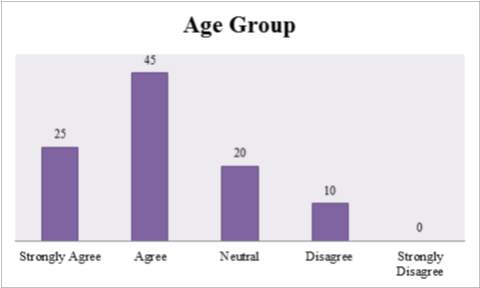
Figure 1: Age Group
| Frequencies | Percentage | Valid Percentage | Cumulative Percentage | ||
| Valid | 18-23 years | 36 | 36 | 36 | 36 |
| 24-28 years | 40 | 40 | 40 | 76 | |
| 29-33 years | 16 | 16 | 16 | 92 | |
| 34-39 years | 2 | 2 | 2 | 94 | |
| 40 years and above | 6 | 6 | 6 | 100 | |
| Total | 100 | 100 | 100 | ||
The above table presents the age group of the consumers of Nestle UK. 36 per cent of the consumers were between the ages of 18-23 years. 40 per cent of the consumers were between the ages of 24-28 years. 16 per cent of the consumers were between the ages of 29-33 years. 2 per cent of the consumers were between the ages of 34-39 years. 6 per cent of the consumers were between the ages of 40 years and above. Therefore, it is evident that most consumers of Nestle UK are between the ages of 24-28 years.
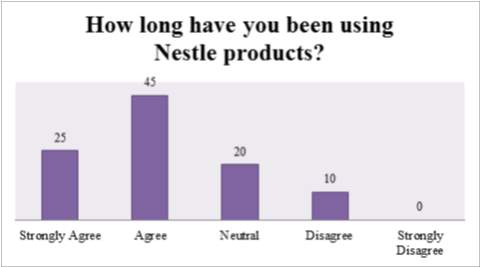
Figure 2: How long have you been using Nestle products?
| Frequencies | Percentage | Valid Percentage | Cumulative Percentage | ||
| Valid | Less than year | 20 | 20 | 20 | 20 |
| 1-2 years | 35 | 35 | 35 | 55 | |
| 2-3 years | 30 | 30 | 30 | 85 | |
| 3-4 years | 0 | 0 | 0 | 85 | |
| 4 years and more | 15 | 15 | 15 | 100 | |
| Total | 100 | 100 | 100 | ||
The above table provides responses of consumers of Nestle UK for the question “How long have you been using Nestle products?” 20 per cent consumers of Nestle UK said less than a year. 35 per cent consumers of Nestle UK said one to two years; 30 per cent consumers said two to three years; fifteen percent of the consumers of Nestle UK said they have been using the brand for more than four years. From the responses of the consumers it is evident that they have been using the same brand for quite a sometime. Therefore, most consumers of Nestle UK have been using the brand since one to two years.
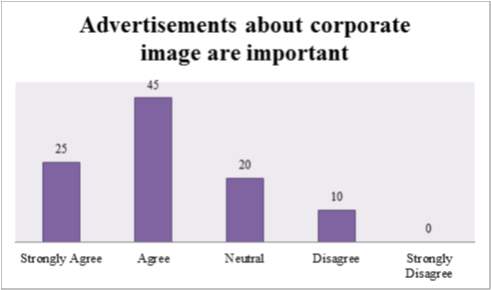
Figure 3:Advertisements about corporate image are important
| Frequencies | Percentage | Valid Percentage | Cumulative Percentage | ||
| Valid | Strongly Agree | 15 | 15 | 15 | 15 |
| Agree | 35 | 35 | 55 | 70 | |
| Neutral | 20 | 20 | 15 | 85 | |
| Disagree | 15 | 15 | 5 | 90 | |
| Strongly Disagree | 15 | 15 | 10 | 100 | |
| Total | 100 | 100 | 100 | ||
The above table provides responses of consumers of Nestle UK for the statement “Advertisements about corporate image are important”. 15 per cent consumersof Nestle UK that corporate image is important advertisements to be successful.35 per cent consumers of NestleUK agreed to the statement; 20 per cent consumers were neutral for the statement; fifteen percent of the consumers of Nestle UKdisagreed to it, whereas, another fifteen percent of the consumers strongly disagreed to the statement. From the responses of the consumers it is evident that advertisements about corporate image of the company are highly important.
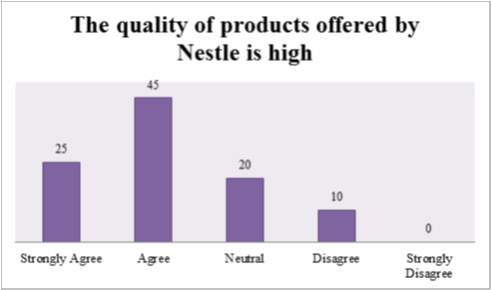
Figure 4: The quality of products offered by Nestle is high
| Frequencies | Percentage | Valid Percentage | Cumulative Percentage | ||
| Valid | Strongly Agree | 15 | 15 | 15 | 15 |
| Agree | 35 | 35 | 35 | 50 | |
| Neutral | 20 | 20 | 20 | 70 | |
| Disagree | 15 | 15 | 15 | 85 | |
| Strongly Disagree | 15 | 15 | 15 | 100 | |
| Total | 100 | 100 | 100 | ||
The above table provides responses of consumers of Nestle UK for the statement “The quality of products offered by Nestle is high”. 15 per cent consumers of Nestle UK that Nestle UK has been offering products of higher and better quality. 35 per cent consumers of Nestle UK agreed to the statement; 20 per cent consumers were neutral for the statement; fifteen percent of the consumers of Nestle UK disagreed to it, whereas, another fifteen percent of the consumers strongly disagreed to the statement. From the responses of the consumers it is evident that the quality of products offered by Nestle is high.
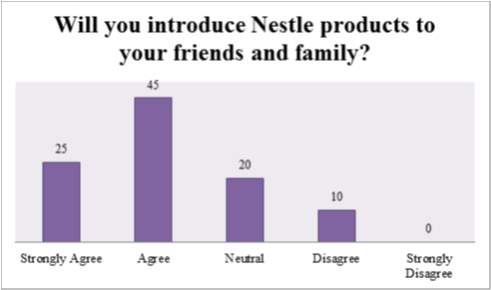
Figure 5: Will you introduce Nestle products to your friends and family?
| Frequencies | Percentage | Valid Percentage | Cumulative Percentage | ||
| Valid | Strongly Agree | 20 | 20 | 20 | 20 |
| Agree | 30 | 30 | 30 | 50 | |
| Neutral | 25 | 25 | 25 | 75 | |
| Disagree | 20 | 20 | 20 | 95 | |
| Strongly Disagree | 5 | 5 | 5 | 100 | |
| Total | 100 | 100 | 100 | ||
The above table provides responses of consumers of Nestle UK for the question “Will you introduce Nestle products to your friends and family?” 20 per cent consumers of Nestle UK strongly agreed that they will definitely introduce Nestle products to their friends and family. 30 per cent consumers of Nestle UK agreed to the statement; 25 per cent consumers were neutral for the statement; twenty percent of the consumers of Nestle UK disagreed to it, whereas, another five percent of the consumers strongly disagreed to the statement. From the responses of the consumers it is evident that the consumers of Nestle products will introduce them to their friends and family.
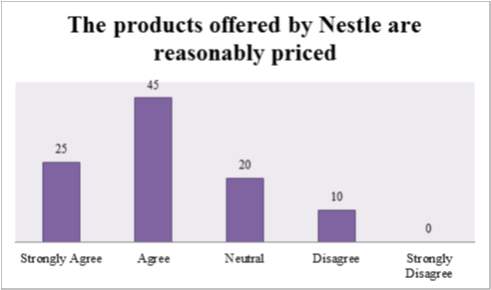
Figure 6:The products offered by Nestle are reasonably priced
| Frequencies | Percentage | Valid Percentage | Cumulative Percentage | ||
| Valid | Strongly Agree | 25 | 25 | 25 | 25 |
| Agree | 35 | 35 | 35 | 60 | |
| Neutral | 20 | 20 | 20 | 80 | |
| Disagree | 5 | 5 | 5 | 85 | |
| Strongly Disagree | 15 | 15 | 15 | 100 | |
| Total | 100 | 100 | 100 | ||
The above table provides responses of consumers of Nestle UK for the statement “The products offered by Nestle are reasonably priced”. 25 per cent consumers of Nestle UK strongly agreed that the products offered by Nestle are reasonably priced. 35 per cent consumers of Nestle UK agreed to the statement; 20 per cent consumers were neutral for the statement; five percent of the consumers of Nestle UK disagreed to it, whereas, another fifteen percent of the consumers strongly disagreed to the statement. From the responses of the consumers it is evident that the products offered by Nestle are reasonably priced.
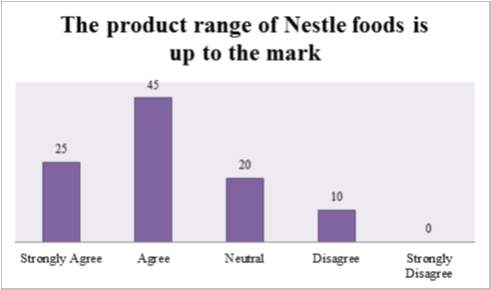
Figure 7:The product range of Nestle foods is up to the mark
| Valid | Strongly Agree | 20 | 20 | 20 | 20 |
| Agree | 30 | 30 | 30 | 50 | |
| Neutral | 24 | 24 | 24 | 74 | |
| Disagree | 20 | 20 | 20 | 94 | |
| Strongly Disagree | 6 | 6 | 6 | 100 | |
| Total | 100 | 100 | 100 | ||
The above table provides responses of consumers of Nestle UK for the statement “The product range of Nestle foods is up to the mark”. 20 per cent consumers of Nestle UK strongly agreed that the product range of Nestle foods is up to the mark. 30 per cent consumers of Nestle UK agreed to the statement; 24 per cent consumers were neutral for the statement; twenty percent of the consumers of Nestle UK disagreed to it, whereas, another six percent of the consumers strongly disagreed to the statement. From the responses of the consumers it is evident that product range of Nestle foods is up to the mark.
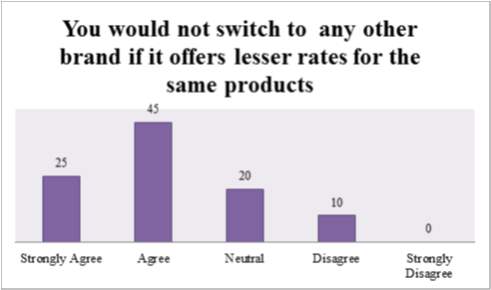
Figure 8:You would not switch to any other brand if it offers lesser rates for the same products
| Frequencies | Percentage | Valid Percentage | Cumulative Percentage | ||
| Valid | Strongly Agree | 25 | 25 | 25 | 25 |
| Agree | 45 | 45 | 45 | 70 | |
| Neutral | 20 | 20 | 20 | 90 | |
| Disagree | 10 | 10 | 10 | 100 | |
| Strongly Disagree | 0 | 0 | 0 | 100 | |
| Total | 100 | 100 | 100 | ||
The above table provides responses of consumers of Nestle UK for the statement “You would not want to switch to any other brand if it offers lesser rates for the same products” 25 per cent consumers of Nestle UK strongly agreed that they would not want to switch to another brand besides Nestle UK. 45 per cent consumers of Nestle UK agreed to the statement; 20 per cent consumers were neutral for the statement; ten percent of the consumers of Nestle UK disagreed to it. From the responses of the consumers it is evident that they would not want to switch any other brand besides Nestle UK. This is a good sign for the company and is a signal of its customers’ loyalty. Therefore, the company must focus on the similar strategy and make improvements to it in order to further gain attention of its customers.
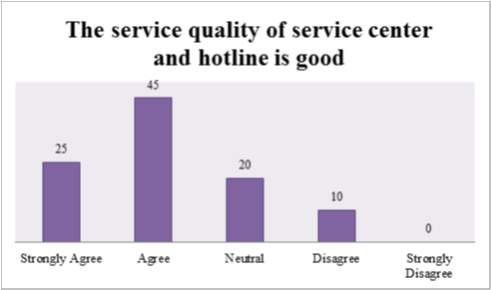
Figure 9:The service quality of service center and hotline is good
| Frequencies | Percentage | Valid Percentage | Cumulative Percentage | ||
| Valid | Strongly Agree | 30 | 30 | 30 | 30 |
| Agree | 50 | 50 | 50 | 80 | |
| Neutral | 10 | 10 | 10 | 90 | |
| Disagree | 10 | 10 | 10 | 100 | |
| Strongly Disagree | 0 | 0 | 0 | 100 | |
| Total | 100 | 100 | 100 | ||
The above table provides responses of consumers of Nestle UK for the statement “The service quality of service center and hotline is good”. 30 per cent consumers of Nestle UK strongly agreed that the service quality of service center and hotline is good. 50 per cent consumers of Nestle UK agreed to the statement; 10 per cent consumers were neutral for the statement; ten percent of the consumers of Nestle UK disagreed to it. From the responses of the consumers it is evident that the service quality of service center and hotline is good. This is a good sign for the company because the more satisfied the customers is with the service and products provided by Nestle UK the more they would stay loyal to the organizations.
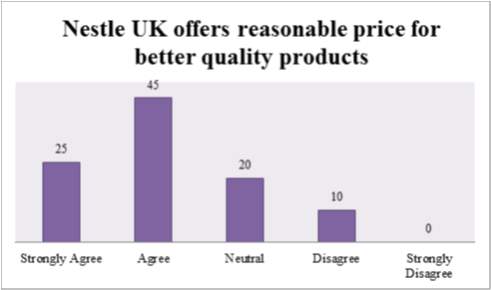
Figure 10:Nestle UK offers reasonable price for better quality products
| Frequencies | Percentage | Valid Percentage | Cumulative Percentage | ||
| Valid | Strongly Agree | 30 | 30 | 30 | 30 |
| Agree | 35 | 35 | 35 | 65 | |
| Neutral | 10 | 10 | 10 | 75 | |
| Disagree | 20 | 20 | 20 | 95 | |
| Strongly Disagree | 5 | 5 | 5 | 100 | |
| Total | 100 | 100 | 100 | ||
The above table provides responses of consumers of Nestle UK for the statement “Nestle UK offers reasonable price for better quality products”. 30 per cent consumers of Nestle UK strongly agreed that Nestle UK offers reasonable price for better quality products. 35 per cent consumers of Nestle UK agreed to the statement; 10 per cent consumers were neutral for the statement; twenty percent of the consumers of Nestle UK disagreed to it. From the responses of the consumers it is evident that Nestle UK offers reasonable price for better quality products. This is a good sign for the company because this shows that the customers are satisfied with the performance of the organization and therefore, they wish to stick to the brand for a longer period of time unless a new competitor that provides better quality for lesser price comes in or the Nestle itself reduces the quality of its products.
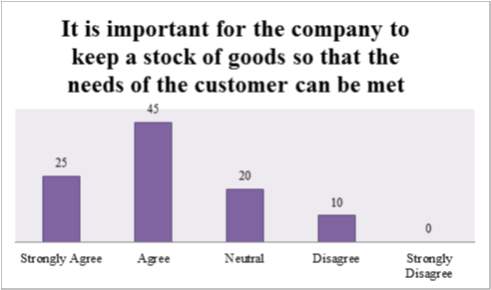
Figure 11:It is important for the company to keep a stock of goods so that the needs of the customer can be met
| Frequencies | Percentage | Valid Percentage | Cumulative Percentage | ||
| Valid | Strongly Agree | 24 | 24 | 24 | 24 |
| Agree | 36 | 36 | 36 | 60 | |
| Neutral | 16 | 16 | 16 | 76 | |
| Disagree | 24 | 24 | 20 | 96 | |
| Strongly Disagree | 4 | 4 | 4 | 100 | |
| Total | 100 | 100 | 100 | ||
The above table provides responses of consumers of Nestle UK for the statement “It is important for the company to keep a stock of goods so that the needs of the customer can be met”. 24 per cent consumers of Nestle UK strongly agreed that It is important for the company to keep a stock of goods so that the needs of the customer can be met. 36 per cent consumers of Nestle UK agreed to the statement; 16 per cent consumers were neutral for the statement; twenty four percent of the consumers of Nestle UK disagreed to it, while four percent of the consumers strongly disagreed to the statement. From the responses of the consumers it is evident that it is important for the company to keep a stock of goods so that the needs of the customer can be met.
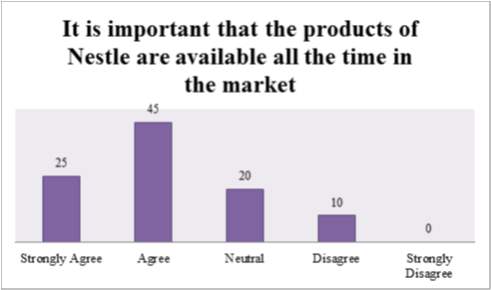
Figure 12: It is important that the products of Nestle are available all the time in the market
| Frequencies | Percentage | Valid Percentage | Cumulative Percentage | ||
| Valid | Strongly Agree | 34 | 34 | 34 | 34 |
| Agree | 24 | 24 | 24 | 58 | |
| Neutral | 20 | 20 | 20 | 78 | |
| Disagree | 8 | 8 | 8 | 86 | |
| Strongly Disagree | 14 | 14 | 14 | 100 | |
| Total | 100 | 100 | 100 | ||
The above table provides responses of consumers of Nestle UK for the statement “It is important that the products of Nestle are available all the time in the market”. 34 per cent consumers of Nestle UK strongly agreed that it is important that the products of Nestle are available all the time in the market. 24 per cent consumers of Nestle UK agreed to the statement; 20 per cent consumers were neutral for the statement; eight percent of the consumers of Nestle UK disagreed to it, while fourteen percent of the consumers strongly disagreed to the statement. From the responses of the consumers it is evident thatit is important that the products of Nestle are available all the time in the market.

Figure 13: The products offer the same quality as perceived by the customers
| Frequencies | Percentage | Valid Percentage | Cumulative Percentage | ||
| Valid | Strongly Agree | 24 | 24 | 24 | 24 |
| Agree | 34 | 34 | 34 | 58 | |
| Neutral | 20 | 20 | 20 | 78 | |
| Disagree | 18 | 18 | 18 | 96 | |
| Strongly Disagree | 4 | 4 | 4 | 100 | |
| Total | 100 | 100 | 100 | ||
The above table provides responses of consumers of Nestle UK for the statement “The products offer the same quality as perceived by the customers”. 24 per cent consumers of Nestle UK strongly agreed that the products offer the same quality as perceived by the customers. 34 per cent consumers of Nestle UK agreed to the statement; 20 per cent consumers were neutral for the statement; eighteen percent of the consumers of Nestle UK disagreed to it, while four percent of the consumers strongly disagreed to the statement. From the responses of the consumers it is evident that it is important that the products offer the same quality as perceived by the customers.
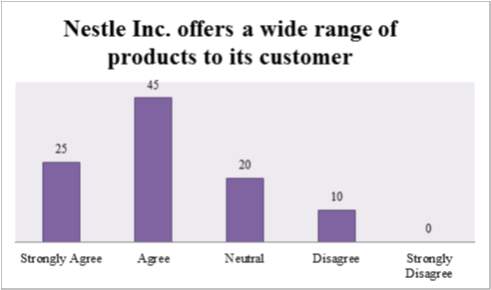
Figure 14:Nestle Inc. offers a wide range of products to its customer
| Frequencies | Percentage | Valid Percentage | Cumulative Percentage | ||
| Valid | Strongly Agree | 20 | 20 | 20 | 20 |
| Agree | 38 | 38 | 38 | 58 | |
| Neutral | 16 | 16 | 16 | 74 | |
| Disagree | 12 | 12 | 12 | 86 | |
| Strongly Disagree | 14 | 14 | 14 | 100 | |
| Total | 100 | 100 | 100 | ||
The above table provides responses of consumers of Nestle UK for the statement “Nestle Inc. offers a wide range of products to its customer”. 20 per cent consumers of Nestle UK strongly agreed that Nestle Inc. offers a wide range of products to its customer. 38 per cent consumers of Nestle UK agreed to the statement; 20 per cent consumers were neutral for the statement; eighteen percent of the consumers of Nestle UK disagreed to it, while four percent of the consumers strongly disagreed to the statement. From the responses of the consumers it is evident that it is important that the products offer the same quality as perceived by the customers.
5.1 Introduction
This chapter provides a discussion on the results of the dissertations that have been obtained from the use of the questionnaire and interview analysis in the previous chapter.
5.2 Discussion
The discussion has been done in accordance to the results of the questionnaire and the interview analysis in reflection to the objectives of this research study.
Role of Product Branding in Creating and Maintaining Customer Loyalty
Product branding plays an important role in the creation of customer loyalty for all the organizations. The results of the questionnaire analysis have shown that Figure 2 shows that most of the consumers are loyal to the Nestle UK because they have been making use of its products for a longer period of time. Similarly, in figure 3 it is evident that corporate advertisements play a crucial role in the success of the organization and this can also increase the number of consumer buying from the organization. This shows that the corporate advertisements have an important role in developing and maintaining the customer loyalty of the consumers. According to figure 4, it is obvious that most of the participants have highly agreed that the quality of the products offered by Nestle UK is really high; therefore, the chances of customer loyalty are also high for Nestle UK. Since the results of the figure 5 have shown that the consumers would definitely want to introduce the brand tot their friends and family, therefore, it means that they themselves are highly satisfied with the product offered by Nestle UK, which is why they would like to introduce these products to their family and friends. This would increase the number of consumers for Nestle UK. It is also important that the company continues to increase its focus on the product branding as well as offer the best quality, because product branding itself will never make the customers loyalty to the company. But if the product branding is strong it would attract customers, furthermore the retention and loyalty of the consumers is entirely dependent on their satisfaction with the use of the product.
Branding Elements Bringing Customer Loyalty at Nestle
It has been stated by the company that the defensive strategies deals with the current customers that means creating barriers and greater satisfaction of the customers. The barriers of switching make the loyal customer pay a greater cost of switching a brand. The satisfaction of customer is made when the organization makes it difficult for the competitors to grab the attention of its regular customers. Customer satisfaction provides benefits of retaining the customer and this leads to greater profits and also a favorable word of mouth from them.
Nestle has been working in order to create a personal relation with its customers. One of the company’s goals is to provide its customers with higher class personal service in all of the four areas of business. Moreover, increase in the competition of market and importance of perceiving the customers and obtaining the relationship of the customers is well understood by the company. Other factors keep the customers to have a feeling of security with the organization and also with certain purchases. All these actions taken by Nestle UK have created personal relations with the customers who wish to switch brands hat create emotional costs for consumers. These relationships offers greater retention of the customers and that the participants also recognized a positive word that is extremely important for the relationship retention with the customers.
The analysis of the interviews highlighted that the young consumers are a key for the marketers as they allows them to predict in a better way and purchase decisions and evaluative judgments that are made and are influenced by the children as they turn in to adults. The skills of decision making emerged all through the childhood and the reliance of the brand is established firmly in the children as young as two years of age. Even though there are a number of researches which shows the behavior of adult buyers and that branding exists it is not as appropriate to take in to consideration that it can be applied completely to the young customers. there are certain difference and similarities between the product branding towards young and adult consumers. Both of these consumers require similar strategies of marketing, therefore, adults have more savvy efforts in comparison to the youth, while youth is attracted easily to the brand. Creating trust is a major component for both the demographics to be loyal.
CHAPTER 06: CONCLUSION
6.1 Conclusion
From all the literature and the primary research data it is concluded that the product branding has the positive impact in bringing the customer loyalty. As the customers are attracted towards the brand by the method brand use to reach them and the intensity of the message can be seen by the customer loyalty towards the brand. There are some challenges to Nestle as they are moving away from the chocolates and coffee and are putting step in nutritional drinks and food.The results expected from the research are that the relation between the product branding and enhancing customer loyalty will be cleared along with there will be some recommendation which will help Nestle to strengthen their brand in the UK competitive market and help them to win more customer loyalty.
This research study has presented collective opinions of certain experts in relation fields and the literature review on topic. Therefore, the building of brand loyalty is mostly based on the individual, whereas the product branding is based on company. The consumer markets of youth are changing always depending on the existing generation. Hence, the overall recommendations and study for creating the brand loyalty through the youth customer markets can be applied to all the professionals and individuals. This research study serves as a tool for education; public relations, marketing and the food industry professional are interested in the strategies of brand loyalty.
In academic researches, customer loyalty has achieved a lot of attention. Most of the researches on customer loyalty have conceptualized loyalty which is a combination of the repetitive purchases and a relative attitude for entity. This research has confirmed that role of product branding have a significant effect on the loyalty of the customers.
The analysis of the questionnaire have highlighted that the respondents are highly satisfied with Nestle products and they do not wish to switch to any other brand. From the responses of the consumers it is evident that they would not want to switch any other brand besides Nestle UK. This is a good sign for the company and is a signal of its customers’ loyalty. Therefore, the company must focus on the similar strategy and make improvements to it in order to further gain attention of its customers.
The interviewees have discussed the role of branding in the creation of customer loyalty. They said that for the purpose of creating customer loyalty it is important to create relationship of trust between the target audience and the brand you are offering them. The also said that it is a fact that the visual materials are related to the creation of branding. They also responded that the customers have loyalty to a performance that is consistent and is seemed to be related to your company’s brand. The interviewees were of the opinion that brand awareness is ability for identifying a brand under varied conditions and adding it comprises of brand recognition and brand recalling.
This chapter of the research provides recommendations for product branding role in creating customer loyalty for Nestle. This chapter provides recommendations is the last objective of this research study which has been catered in this
After the completion of this research, a lot of information have been gathered and assessed on the topic of product branding in role in building customer loyalty. This provided information is important for highlight the content that is most important and is present for the future of marketing, and food industry. there are certain recommendations that have been made for practice which includes capitalization on influence of the consumers and building up relationship with the target audience of the specific brand and also management of the current customers loyalty so that they are in line with the brand.
There are billions of brand in the world, if Nestle wishes to stand out it must create relations with its customers. A brand is the total experience of the person with the organization, product and most of all consumer and organization association. For the purpose of developing loyalty it is important to create trust with the targeted audience. Nestle UK have an increased focus onthe way in which trust can be gained from the target audience. The company can also adopt the grass roots style of consumer marketing. In order to gain trust it is important that the market takes it in to one personal way in comparison to the mass media. All this creates a personal relation due to which the consumer can identify Nestles brand at a personal level. By the creation of a community for the consumers that surrounds the brand the person can ultimately create loyalty to the brand. The communities of the brand create loyalty and cause the customers to keep an intention for the relationship and repurchase the product.
Nestle UK must also pay greater attention to the younger generation because in future they would become their loyal customers. Since youth is the upcoming generation and creating relations with them now would set the brand for future. In the industrialized countries, the children have a purchasing power. The young target audience can establish loyalty in an easier way. Since younger generation get attached to certain things easy specially the ones that are fun. In my opinion, if a fan base is built initiating with the young generation and you wish them to continue with the grass roots it would be very good for creating a connection on a personal level in a more intimate time.
Emotionally connecting makes the consumer identify things with the organization itself. Therefore, if the organization is spending time in order to pay attention to the people and it gets to know a little less for creating the advocates and evangelists for the brand as it builds awareness for the audience. In order to be unique and stands out the strategies of marketing. With the youth consumers, a little lesser effort goes a longer way. The company can gain customer loyalty because it is an effort that goes to a longer way. Offering them free gifts or products and creating a free event for the customers and it would lead to a more personal and emotional connection.
Nestle is diversifying which is good but their key branding tools should remain the same. Nestle need to focus on differentiation as the number of competitors are increasing day by day. Along with the customer loyalty Nestle has to make their customer brand loyal so that they found it difficult to switch to other brand.
The important implications for the managers are to consider while dealing the loyalty of the customers is to create and maintain the relations with customers. Creating good and close relations with the consumers in not easy for maintaining a relation is more difficult. The customer loyalty is of higher value for organizations; hence, they must nurture the relationships they have with the customers. it is also important for the managers to look for improving the relationship with customers and involve in the process entirely
Cite This Work
To export a reference to this article please select a referencing stye below:
Related Services
View allRelated Content
All TagsContent relating to: "Marketing"
Marketing can be described as promoting and selling certain products or services to meet the needs of the customer. Tasks involved with Marketing include market research, content creation, advertising, and more.
Related Articles
DMCA / Removal Request
If you are the original writer of this dissertation and no longer wish to have your work published on the UKDiss.com website then please:




